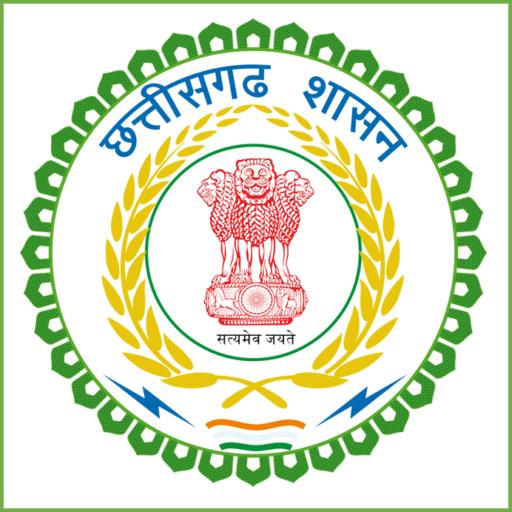Godhan Nyay Yojana: Nature and Implementation
Introduction
In the realm of innovative governance and sustainable development, the Godhan Nyay Yojana stands out as a remarkable initiative. Launched by the government of Chhattisgarh in 2020, this scheme primarily aims at providing financial benefits to livestock owners by procuring cow dung from them. This initiative is not just an economic strategy but also an environmental and social project, integrating multiple aspects of rural development, environmental conservation, and economic upliftment.
Objectives of the Scheme
The primary objectives of the Godhan Nyay Yojana include:
- Economic Empowerment: By procuring cow dung at a fixed rate from cattle owners, the scheme provides an additional source of income to farmers and livestock owners.
- Environmental Conservation: The scheme promotes the production of organic manure, reducing the reliance on chemical fertilizers and thereby enhancing soil health.
- Rural Employment: It opens up new avenues for employment in rural areas through the processing of cow dung into organic fertilizers and other products.
- Waste Management: Efficient management of animal waste, reducing health hazards and pollution in rural areas.
Implementation Strategy
The Godhan Nyay Yojana is implemented through a well-structured process:
- Procurement of Cow Dung: The government sets up procurement centers where farmers can sell cow dung at a predetermined rate.
- Verification and Payment: The quantity and quality of cow dung are verified, and payments are made directly into the bank accounts of the beneficiaries.
- Processing and Production: The collected dung is then processed to produce organic fertilizers, which are used for agriculture or sold in the market.
- Distribution Network: A robust distribution network ensures the organic manure reaches farmers and agricultural fields.
Impact on Farmers and Livestock Owners
The scheme has significantly impacted the lives of farmers and livestock owners:
- Steady Income Source: By offering a consistent market and price for cow dung, the scheme provides a reliable source of additional income.
- Encouragement of Animal Husbandry: This initiative encourages farmers to invest more in animal husbandry, knowing that waste products will also generate revenue.
- Reduction in Input Costs: The availability of organic manure at lower costs reduces the dependency on expensive chemical fertilizers.
Environmental Benefits
The environmental implications of the Godhan Nyay Yojana are substantial:
- Soil Health Improvement: Organic manure enhances soil fertility and structure, promoting sustainable agriculture.
- Reduction in Chemical Fertilizers: With more organic options available, the use of harmful chemical fertilizers is reduced, leading to less soil and water pollution.
- Carbon Footprint Reduction: Managing animal waste more efficiently reduces greenhouse gas emissions, contributing to climate change mitigation.
Challenges and Solutions
Despite its many benefits, the scheme faces certain challenges:
- Logistics and Infrastructure: Setting up and maintaining procurement and processing centers requires significant investment.
- Quality Control: Ensuring the quality of cow dung and produced manure is vital for the scheme’s success.
- Awareness and Participation: Educating farmers and livestock owners about the scheme and encouraging their participation is crucial.
To address these challenges, the government could:
- Increase investment in infrastructure development.
- Implement stringent quality control mechanisms.
- Conduct awareness campaigns and provide incentives for participation.
Conclusion
The Godhan Nyay Yojana is a prime example of a multi-faceted development strategy. It effectively intertwines economic, environmental, and social development, demonstrating how traditional practices can be modernized for broader benefits. This scheme has the potential to serve as a model for other states and countries aiming to integrate livestock management with sustainable rural development. The success of this initiative lies not just in its concept but also in the meticulous implementation and continuous improvement responding to ground-level realities and challenges.
MCQ BASED ON ESSAY

Question 1: What is the primary aim of the Godhan Nyay Yojana?
Option 1: Improving urban infrastructure
Option 2: Providing financial aid for education
Option 3: Procuring cow dung from livestock owners
Option 4: Promoting digital literacy
Correct Answer: Procuring cow dung from livestock owners
Question 2: When was the Godhan Nyay Yojana launched?
Option 1: 2018
Option 2: 2019
Option 3: 2020
Option 4: 2021
Correct Answer: 2020
Question 3: Which Indian state initiated the Godhan Nyay Yojana?
Option 1: Madhya Pradesh
Option 2: Uttar Pradesh
Option 3: Chhattisgarh
Option 4: Gujarat
Correct Answer: Chhattisgarh
Question 4: What is a significant environmental benefit of the scheme?
Option 1: Reduction in air pollution
Option 2: Increase in wildlife population
Option 3: Reduction in chemical fertilizer use
Option 4: Improvement in urban landscaping
Correct Answer: Reduction in chemical fertilizer use
Question 5: How does the scheme impact farmers and livestock owners?
Option 1: Provides educational scholarships
Option 2: Offers a steady source of income
Option 3: Grants free livestock
Option 4: Reduces electricity costs
Correct Answer: Offers a steady source of income
Question 6: What is the role of procurement centers in the scheme?
Option 1: Training farmers
Option 2: Selling agricultural equipment
Option 3: Procuring cow dung
Option 4: Distributing seeds
Correct Answer: Procuring cow dung
Question 7: What does the scheme encourage farmers to invest more in?
Option 1: Solar energy
Option 2: Animal husbandry
Option 3: Crop diversification
Option 4: Water conservation
Correct Answer: Animal husbandry
Question 8: What form of payment is used in the scheme?
Option 1: Cash payments
Option 2: Credit points
Option 3: Direct bank transfer
Option 4: Agricultural subsidies
Correct Answer: Direct bank transfer
Question 9: What is produced from the collected cow dung?
Option 1: Biogas
Option 2: Electricity
Option 3: Organic fertilizers
Option 4: Animal feed
Correct Answer: Organic fertilizers
Question 10: What challenge does the scheme face in terms of logistics?
Option 1: Lack of transportation
Option 2: Insufficient storage facilities
Option 3: High fuel costs
Option 4: Infrastructure development
Correct Answer: Infrastructure development
Question 11: How does the scheme contribute to climate change mitigation?
Option 1: By reducing greenhouse gas emissions
Option 2: Through reforestation
Option 3: By increasing renewable energy use
Option 4: Through water conservation
Correct Answer: By reducing greenhouse gas emissions
Question 12: What aspect of rural development does the scheme emphasize?
Option 1: Digital literacy
Option 2: Healthcare improvements
Option 3: Educational facilities
Option 4: Employment opportunities
Correct Answer: Employment opportunities
Question 13: What challenge does the scheme face in quality control?
Option 1: Monitoring employee performance
Option 2: Ensuring manure quality
Option 3: Regulating market prices
Option 4: Animal health management
Correct Answer: Ensuring manure quality
Question 14: What is a crucial step in ensuring the scheme’s success?
Option 1: Expanding to urban areas
Option 2: Educating farmers about the scheme
Option 3: Importing advanced technology
Option 4: Government subsidy increase
Correct Answer: Educating farmers about the scheme
Question 15: What is the scheme’s impact on soil health?
Option 1: Increases soil erosion
Option 2: Reduces soil fertility
Option 3: Improves soil fertility
Option 4: Has no significant impact
Correct Answer: Improves soil fertility
Question 16: What is a direct benefit of the scheme to the environment?
Option 1: Increased biodiversity
Option 2: Reduction in water pollution
Option 3: Lower air temperatures
Option 4: Enhanced soil health
Correct Answer: Enhanced soil health
Question 17: How does the scheme affect the use of chemical fertilizers?
Option 1: Increases dependency
Option 2: Has no effect
Option 3: Reduces dependency
Option 4: Bans them entirely
Correct Answer: Reduces dependency
Question 18: What is a major goal of the scheme in terms of waste management?
Option 1: Reducing plastic use
Option 2: Efficient animal waste management
Option 3: Decreasing household waste
Option 4: Improving sewage systems
Correct Answer: Efficient animal waste management
Question 19: What does the distribution network in the scheme ensure?
Option 1: Equal income distribution
Option 2: Organic manure reaches farmers
Option 3: Cow dung is processed correctly
Option 4: Farmers receive financial aid
Correct Answer: Organic manure reaches farmers
Question 20: What role does the scheme play in rural employment?
Option 1: Decreases job opportunities
Option 2: Has no impact
Option 3: Increases job opportunities
Option 4: Shifts focus to urban employment
Correct Answer: Increases job opportunities
Question 21: What is the impact of the scheme on input costs for farmers?
Option 1: Increases significantly
Option 2: Remains the same
Option 3: Reduces due to lower manure costs
Option 4: Fluctuates unpredictably
Correct Answer: Reduces due to lower manure costs
CGPSC 2024 Practice Question, छत्तीसगढ़ राज्य सेवा परीक्षा: अभ्यास प्रश्नों के PDF

Leave a Reply